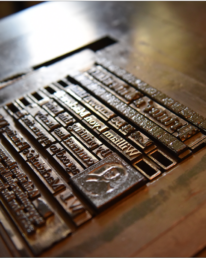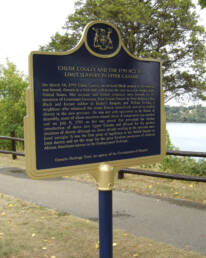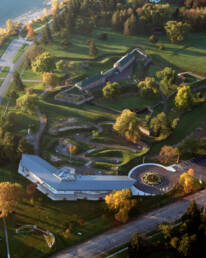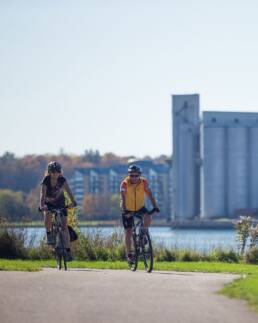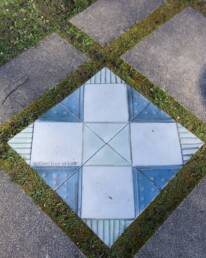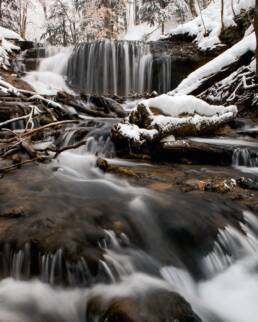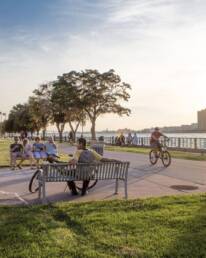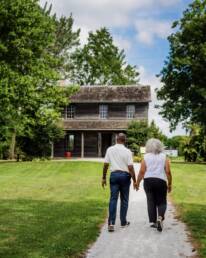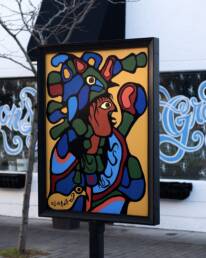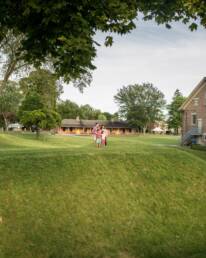Niagara Black History Tour
January 25, 2023 | Photo courtesy of Destination Ontario
Niagara Black History Tour
Traveling along the Niagara River offers a vast and stunning experience of nature. The River is quite a sight, often presenting an alluring teal blue colour as it stretches 58 km between Lake Erie and the spectacular Niagara Falls. The River’s extensive journey marks the border between the United States of America and Canada.
Many tourists to Niagara Falls may be unaware of how Black communities have shaped this region for centuries. The area served as the Underground Railroad for many who followed the route seeking freedom in the mid-19th century. During the War of 1812, this is where British colonies’ allies, which included Black and Indigenous soldiers, battled with the United States of America.
Day One - Niagara-on-the-Lake
MORNINGQUEENSTON HEIGHTS AND THE MACKENZIE PRINTERY
WAR OF 1812 AND THE UNDERGROUND RAILROAD
Follow the Niagara River for a journey into the extensive Black history of the borderlands. Explore Queenston Heights, a lovely park on the Niagara escarpment. Here, you can find the memorials dedicated to the War of 1812, when British colonies in North America defended themselves from the United States of America. Visit the Coloured Corps War of 1812 heritage plaque, which is dedicated to the Black soldiers who fought with the British allies, and the Landscape of Nations Memorial, commemorating the Indigenous soldiers who also fought in the war.
Follow the North Star with Niagara Bound Tours to learn about the migration of Black American slaves coming to Canada. They’ll invite you to join a caravan tour to view the underground railroad. Listen to and learn from the impactful stories about escape from slavery.
Next, make your way to Queenston, a little village in the valley, and stop at Mackenzie Printery. This newspaper museum printed the Act Against Slavery in 1793, a first step in the gradual abolition of slavery in Canada.
AFTERNOONNIAGARA-ON-THE-LAKE
BLACK HISTORY THROUGH ART
As you venture through Niagara-on-the Lake, keep an eye out for the memorial plaque to Chloe Cooley. It was her resistance that prompted the Act Against Slavery in the late 1800s. You can also take part in a self-guided walking tour (a handy app is available) as you wander around the Voices of Freedom Park. A series of art installations teach visitors about the history of Black people in the area, including those who were enslaved, Black loyalists, those who sought freedom, and free Blacks. As you make your way through the park, you’re reminded about the often-unacknowledged contributions Black settlers made in developing the area.
As you explore Niagara-on-the-Lake, there are plenty of restaurants and patios to choose from. After lunch, if the weather is warm, why not take a horse-driven carriage ride around the area? It’s a special way to soak in the essence of this popular strip.
AFTERNOONWILLIAM SUSANNAH STEWARD HOUSE, NEGRO BURIAL GROUND AND FORT GEORGE
AN AFTERNOON OF HISTORY AND HERITAGE
In the afternoon, head over to the William and Susannah Steward House (a viewing-only site). William Steward was African American and a community leader. Nearby you’ll find the Negro Burial Ground – a graveyard at the Niagara Baptist Church where members of the Black community worshiped.
Alternatively, you can pay a visit to Fort George, the home of the Coloured Corps, which is open seasonally. Step inside the fort’s restored buildings to see what life was like for soldiers in the 1800s. In the summer you’ll find re-enactments, costumed guides, and marching bands. Before you leave, be sure to pause at the Niagara River beside the fort.
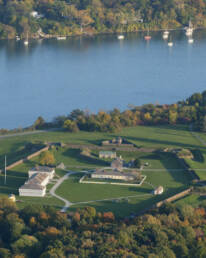
EVENINGFIRST ONTARIO PERFORMING ARTS CENTRE
ENTERTAINMENT IN THE CITY
Once you’re done exploring Niagara-On-The-Lake, make your way to St. Catharine’s for an evening of entertainment. The First Ontario Performing Arts Centre is known for blues, jazz and rock concerts, comedy stand-ups and even local movie screenings.
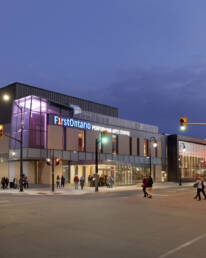
Day Two - St. Catharines
MORNINGST. CATHARINES FARMERS MARKET AND SALEM CHAPEL
HARRIET TUBMAN’S TOWN
Make an early start to the day with a trip to the St. Catharines’ farmers market, (open seasonally). Power up with local coffee and nibble on homegrown produce and freshly baked pastries as you stroll and seek souvenirs.
Harriet Tubman is the most famous resident of St. Catharines. You can find her pew in the Salem Chapel in the British Methodist Episcopal Church. This local museum has many tales of Tubman and the Underground Railroad (make sure to call ahead and book a guide). After the tour, extend your afternoon with a stroll around Richard Pierpoint Park – named after a Black hero of the War of 1812.
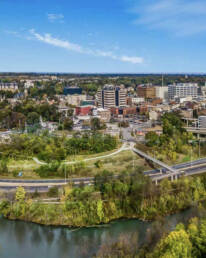
AFTERNOONCARIBBEAN EATS, ST. CATHARINES MUSEUM AND WELLAND CANALS CENTRE
DIG IN – TO LUNCH AND HISTORY
For lunch, why not check out some of the local Caribbean cafés and restaurants? These include the Caribbean Eatery, Island Spice Take Out and JamRock Irie Jerk, which features Jamaican dishes like slow-cooked oxtail, jerk chicken breast meal, and curry chicken roti.
After lunch, head out to the St. Catharines Museum and Welland Canals Centre. The temporary exhibit Last Stop: In their Own Words, provides a look at the experience of the Black community in St. Catharines as told in their own words, and as they navigated their new lives in Canada. The viewing Lock 3 platform will provide an up-close view of ships as they lock through the Welland Ship Canal.

EVENINGFORT ERIE
BEACH PROMENADE AND BATTLE REENACTMENTS
Fort Erie is a quaint hamlet at the south end of the Niagara River. Start with a visit to Waverly Beach Park and discover an amazing view of the Buffalo, USA skyline. Stroll the shores of Erie Beach Amusement Park which has a series of heritage plaques about the hotel and its role in forming the American Civil Rights movement in 1905. It was the forerunner to the National Association for the Advancement of Colored People (NAACP).
Old Fort Erie is a historically rich spot where visitors can view battle sites from the War of 1812. There’s a museum nearby that offers education and context on the war itself. In the summer you can watch scores of re-enactors as they play out specific battles, which include Black and Indigenous troops who were crucial in defending the British colonies. Just down the road is Freedom Park. This small and quiet park is the site of a former ferry terminal and memorial to the Black people who crossed over here for freedom.
End the day with some food at any of the waterfront cafés and restaurants at Crystal Beach – or further along at Port Colborne.
WANT TO TAKE A DETOUR?
CYCLING ALONG NIAGARA’S NATURE TRAILS
You can do this entire tour on a bicycle by traveling along the Niagara Recreational Trail. The paved trail is mostly along the Niagara River, with a few sections on quiet side roads. The Niagara bike trail joins up with the Welland Canal Trail, which offers another safe and quiet route along the water.
YOUR TRIP AT A GLANCE
YOUR TRIP AT A GLANCE
This guide represents a weekend-long experience, highlighting one of the many wonderful destinations in the area. To suggest a destination for a future guide, please contact us.
All editorial decisions were made at the sole discretion of Ontario Culture Days staff. Jacqueline Scott, Ramona Leitao, Keira Park and Kaitlyn Patience contributed to this culture guide.
Owen Sound, Path to Freedom
November 10, 2022 | Photo by Melissa Crannie
Owen Sound, Path to Freedom
Owen Sound has been called “The Scenic City” with good reason. At the mouths of the Pottawatomi and Sydenham Rivers, it’s beautifully situated. It’s also home to fascinating history as the northernmost “station” on the Underground Railroad — the path to escaping slavery once the British Empire abolished it in 1834. Make sure to take time to explore the city’s fine museums, eat equally fine food, and check out the Sound’s great music scene. It’s a small city, but it has a big personality.
MORNINGWEST SIDE TOUR
FROM SALVATION CORNERS TO DAMNATION CORNERS
Owen Sound is eminently walkable. Start with a coffee on the East Side, now known as the River District, (Frogs Pond and Birgit’s Bakery Café among other spots), strolling through famously named intersections: Salvation Corners (many churches) and Damnation Corners (infamous taverns of yesteryear). Head west to delve into history and architecture. The West Side Tour has over a dozen stops including the Kennedy Foundry, a machine shop that built WWll ship propellors and was one of a number of Owen Sound businesses to employ Black workers. Molock House was the home of Francis Ebenezer Molock, who escaped from slavery with help from famous Underground Railroad “conductor,” Harriet Tubman. An early congregation of what’s now known as the British Methodist Episcopal Church held Owen Sound’s first Emancipation Picnic, a tradition that continues to this day. On the architecture tip: look out for Wilkinson House, restored to its Arts and Craft beauty, as well as notable examples of homes in the Queen Anne Revival style.
AFTERNOONA MUNIFICENCE OF MUSEUMS
ROOTS AND WINGS
There’s no denying that Owen Sound, built along the Niagara Escarpment within the Bruce Peninsula, has unique natural beauty, including four gorgeous waterfalls in the area. But there are also wonders created by human hands, evidenced in some excellent museums and galleries focused on telling regional stories. There’s the story of Canada’s most famous flying ace, told at the Billy Bishop Home & Museum. There’s the story of Grey County’s diverse roots: Grey Roots Museum & Archives commemorates the struggles and victories of the area’s Black community. Then there’s the story of Tom Thomson. The Tom Thomson Art Gallery honours the iconic artist (who grew up north of Owen Sound), as well as hosting a collection of contemporary artists who engage in landscape, as Thomson himself so famously did. And you’ll find local art throughout the city – look out for more than 20 public artworks produced by the Gallery or independent artists and collaborators.
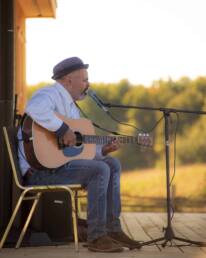
AFTERNOONHARRISON PARK
WALK THE FREEDOM TRAIL
Harrison Park’s Freedom Trail is both figuratively and literally a moving way to explore some of the story of Black settlers in Grey County. It’s a ten-kilometre self-guided trail connected to former slaves who lived and worked in the area. Visit the Black History Cairn, designed by Bonita Johnson de Matteis, a local artist who herself is a descendant of escaped slaves. The cairn traces some of the routes people were forced to take into slavery, and pursued to take out of it. Details include windows modelled on the Little Zion Church (the first Black church in Owen Sound). In August, visitors won’t want to miss the annual Emancipation festival and picnic, held every summer since 1862 to mark the anniversary of the Slavery Abolition Act of 1834. That act abolished slavery in most British colonies, freeing enslaved Africans in a number of countries, including Canada. It’s a special event — among other things it’s thought to be the longest-running Emancipation festival in North America. Harrison Park itself has been called the “jewel in the crown” of Owen Sound with 40 hectares of streams, forest, gardens and playgrounds. Visitors may wish to stroll alongside or paddle the river, perhaps stopping by Harrison Park Inn restaurant, a favourite local landmark. Nearby, visit the Potter’s Field Monument and Interpretive Plaque in Greenwood Cemetery. The community came together to create the monument as a tribute to the memory of those interred in the Field, among them members of Owen Sound’s black community who sought freedom on the Underground Railroad. These individuals often lacked the resources or family support for appropriate burial arrangements.
EVENINGMUSIC
SOUNDS IN THE SOUND
Owen Sound is known for its lively music scene, from classical (as the home of the Georgian Bay Symphony Orchestra), to folk, blues, jazz and rock. Open mic nights and songwriters’ circles are a regular feature around town, so check out spots like Heartwood Hall, Harmony Centre, The Pub and Jazzmyn’s — the last two also popular spots to dine.
Of course, if you want to consider a full range of Owen Sound dining options have a look at the city’s “Savour Owen Sound” venues. They’re worth a visit at any time of year, though the annual, award-winning month-long Savour event may up the culinary stakes. Or visit Naagan, an Indigenous dining experience by chef Zach Keeshig, operating out of the Owen Sound Farmers’ Market. Either way, Owen Sound aims to satisfy your inner foodie with hyper-local deliciousness.
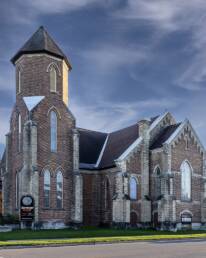
DETOUR
FALL FOR OWEN SOUNDS’ WATERFALLS
When it comes to waterfalls Ontario is rightfully renowned for majestic Niagara, but Owen Sound also claims waterfall glory, thanks to the rocky Niagara Escarpment. Inglis Falls is perhaps most spectacular of the four falls in the area, particularly in winter when intricate ice formations charm snowshoers and cross-country skiers. Pretty little Weavers Creek Falls is accessible from the south end of Harrison Park — adventurers might even hike or snowshoe from there to Inglis Falls, just two and a half kilometres on the Bruce Trail. Jones Falls, west of town on the Pottawatomi, may lure you in springtime for the exquisite Trilliums and Columbines, plus an impressive spring runoff. Last and certainly not least, the horseshoe-shaped Indian Falls: a one-kilometre walk up the escarpment (stairs ease your way) through hardwood forest, giving it definite autumnal appeal.
YOUR TRIP AT A GLANCE
YOUR TRIP AT A GLANCE
This guide represents a weekend-long experience, highlighting one of the many wonderful destinations in the area. To suggest a destination for a future guide, please contact us.
All editorial decisions were made at the sole discretion of Ontario Culture Days staff. This guide was written by Li Robbins.
Windsor, Border City
October 11, 2022 | Photo courtesy of Ontario Heritage Trust
Windsor, Border City
Stretched along the Detroit River, Windsor is a hub of cultural, industrial and creative innovation. The region is speckled with galleries, concert venues, international foods, and – as Canada’s southernmost city and a historic entry point into our nation – rich in Black history.
As a border city, Windsor played an important role in the Underground Railroad, an anti-slavery freedom movement that helped thousands to escape enslavement and start new lives in Canada where slavery had been abolished in 1834. This heritage is preserved in local museums and through annual cultural events.
Day One
MORNINGRIVERFRONT
SCENIC VIEWS AND SCULPTURE
In the morning, start your trip downtown getting to know Windsor’s riverfront, which flows past a variety of landmark experiences. The Detroit River has always been a place of convergence – before settler contact, Indigenous peoples called it Wawiiatanong, meaning ‘where the river bends.”
Whether you travel on foot or pedal along calming bike paths, you must pause to explore the Windsor Sculpture Park. This outdoor gallery holds over 33 works of public art by internationally recognized artists, including Haydn Llewellyn Davies, Sorel Etrog, and Xiaofeng Yin. With waterfront views and paved pathways, this free-entry park can be enjoyed throughout all four seasons.
AFTERNOONJOSIAH HENSON MUSEUM OF AFRICAN-CANADIAN HISTORY OR CHIMCZUK MUSEUM
RECLAIMING BLACK HISTORY
Discover Black history on a drive to the beautiful village of Dresden about 1.5 hours away. Here you can visit the Josiah Henson Museum of African-Canadian History, an Ontario Heritage Trust stewarded site. Henson was a preacher, author and, while escaping from slavery, a conductor on the Underground Railroad, rescuing 118 enslaved people in his time. Once in Upper Canada, Henson turned his passion for self-reliance and education into a new settlement, Dawn, with a school, farming community and industries. He was fictionalized as Uncle Tom in an anti-slavery novel, Uncle Tom’s Cabin. But this was an identity and name he refuted – so, the museum has recently renamed itself to reflect his objection. The sites of the Dawn settlement and its Underground Railroad stories are now told here through interactive exhibits, Black History Month programming and special events to mark Emancipation Day.
Then visit the nearby Buxton National Historic Site and Museum. Once a settlement for escaped slaves and free Black people, today the site tells the story of the Buxton community and its significance to the Underground Railroad and Black Canadian history. The museum offers guided tours, exhibits, and educational programs that help paint a picture of the community that once lived there.
Another option in Windsor’s downtown core is the Chimczuk Museum, which features a walk-through of Windsor from the pre-historic era to the modern day, including a darkened tunnel-like space which tells the stories of those who traveled the Underground Railroad.
EVENINGTHE CHRYSLER THEATRE
STAND-UP, SINGERS AND STAGE DOORS
Return downtown for an evening at the Chrysler Theatre. Situated within the St. Clair College Centre for the Arts, which boasts a competitive musical theatre program, this facility is abuzz with creative talent and offers another stunning waterfront view. There’s something for every audience, including concerts, stand-up comedy, movie nights, drag shows, and professional theatre and dance.

Day Two
MORNINGRUM RUNNERS BUS TOUR
DANCE THE CHARLESTON
Rum and whisky flowed along the Windsor-Detroit border during Prohibition in the 1920s, when spirits and alcohol were outlawed on both sides of the border. For an immersive experience, hop on the Rum Runner’s Tour bus and let a colourful, funny cast of roaring twenties characters take you back in time. Your ticket to this multi-hour tour includes lunch in a reimagined speakeasy filled with piano music of the era and boards to dance the Charleston on, if you’re feeling adventurous and up for a spin.
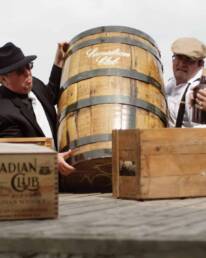
AFTERNOONART WINDSOR-ESSEX (AWE)
AFTERNOON AT THE ART GALLERY
Come back to current times with contemporary art, found at the renowned gallery Art Windsor-Essex. With nearly 4000 works of art, it is the largest public art gallery in Southwestern Ontario and includes an extensive collection of works by Indigenous artists, like Norval Morrisseau and Bonnie Devine, and artwork by Black artists Charles McGee, Kara Springer and Tim Whiten, in addition to related thematic exhibitions. You’ll also find work by a diverse array of artists at the Arts Council Windsor & Region in the Artspeak Gallery, and through their Art.Work workshops and New Voices program.
Later, you can grab a quick bite near the gallery, with The Mini Restaurant (Vietnamese), Dhesi Swaad (Indian), or Steak n Shawarma (Middle Eastern). Or for more delicious options a 5 minute drive away, try Bubi’s Awesome Eats for gourmet burgers, Native Wonders Gourmet Grub’s Indigenous inspired and traditional fare, or Mazaar with its Lebanese cuisine.
Day THREE
MORNINGSANDWICH FIRST BAPTIST CHURCH
BUILDING BLOCKS OF HISTORY
On your final day, dive deeper into Black history around the Windsor area. The first stop is Sandwich First Baptist Church. Sandwich was a town amalgamated into Windsor in 1935, but its history stands tall in this National Historic Site, the oldest – and still active – Black church in Canada. Noted for its simplicity and modest design, the church is built with bricks made of clay dug from the Detroit River. More importantly, the bricks were molded and laid by hand by Underground Railroad refugees, freemen, and runaways who settled in Sandwich. They formed a congregation which further rescued and sheltered more people escaping through the Underground Railroad, often using hidden rooms in the church to shelter newcomers from authorities.
MORNINGAMHERSTBERG FREEDOM MUSEUM AND FORT MALDEN
SITES TO THE SOUTH
Next stop is small town Amherstburg, 25 minutes south of your morning’s activities. Here you’ll find two museums: for War of 1812 history and re-enactments, go through Fort Malden; for African-Canadian history, spend the afternoon at the Amherstburg Freedom Museum.
Amherstburg was for many the last stop on the Underground Railroad; between 1800 and 1860, 50,000 men, women and children passed through or settled in this sanctuary. Those people would’ve seen the same sites preserved today by the Amherstburg Freedom Museum, like the Nazrey A.M.E. Church and the home of George Taylor, a formerly enslaved man. The museum offers guided and self-guided tours for walk-ins and tour groups, and if you come during certain seasons, you can catch cultural programming like Ribs & Ragtime and Emancipation Celebrations. Curators at the museum put together limited-run exhibits, in addition to a permanent collection of artifacts that educate and inspire.
For lunch, enjoy a picnic in nearby Centennial Park or along the banks of the Amherstburg Harbour.
AFTERNOONPOINT PELEE NATIONAL PARK
ECO EXPLORATION
For an unforgettable nature experience, take a scenic drive to Point Pelee National Park, Canada’s most ecologically diverse National Park. Birdwatching here is renowned during the migratory seasons and avid watchers can participate in the Festival of Birds, a 3-day event in May. More than wildlife, the park is also ripe for swimming, canoeing, cycling, or hiking the trails. In the fall, enjoy the annual afternoon arts market, Art at the oTENTiks, or biweekly stargazing nights. The park remains open in the winter, where you can explore quiet trails muffled by snow, surrounded by natural ice formations.
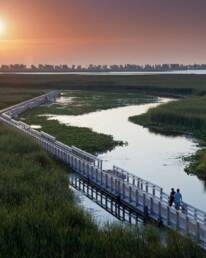
EVENINGLEAMINGTON
LOCAL EATS
Finish your day by choosing from a selection of well-regarded restaurants in Windsor including Eddy’s Mediterranean Bistro, India 47, Thai Time, or Zuleeats (which promises to take your tastebuds on a trip to Ghana with savoury pies, sausage rolls and butter tarts!).
WANT TO TAKE A DETOUR?
A BLACK MECCA IN CHATHAM
An hour away from Windsor, and run by the Chatham-Kent Black Historical Society, the Black Mecca Museum is dedicated to uncovering and celebrating the rich history of the region’s Black community. Once known as “The Forks,” Chatham was a sanctuary for runaway slaves and saw a significant increase in its Black population by the mid-1800s. Interactive displays and exhibits explore the lives of Black families who settled there.
VISIT THE ISLAND
Should you find yourself with additional time to enjoy the region, visiting Pelee Island is a must. This beautiful location houses a rare Carolinian forest, two provincial nature reserves and more than a handful of conservation areas. Wine and history buffs may want to sign up for a Pelee Island Adventures tour of Vin Villa – the most historically significant winery in North America. As part of the tour, you’ll be offered delicious tastings, and the opportunity to wander through ruins and a restored basement that will make you feel as if you’ve travelled back in time.
YOUR TRIP AT A GLANCE
SEE
Amherstburg Freedom Museum
Arts Council Windsor & Region
Art Windsor-Essex (AWE)
Black Mecca Museum
Buxton National Historic Site and Museum
The Chrysler Theatre
Josiah Henson Museum of African-Canadian History
Leamington Arts Centre
Point Pelee National Park
Rum Runners Bus Tour
Windsor Sculpture Park
NEED A MAP?
This guide represents a weekend-long experience, highlighting one of the many wonderful destinations in the area. To suggest a destination for a future guide, please contact us.
All editorial decisions were made at the sole discretion of Ontario Culture Days staff. Jacqueline Scott, Glodeane Brown, Eilish Waller and Kaitlyn Patience contributed to this culture guide.
.


